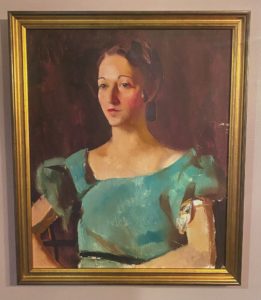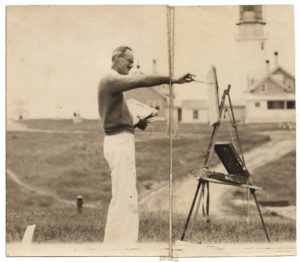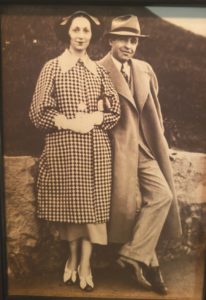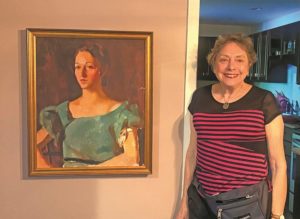PROVINCETOWN — Millie Harris first came to town in the summer of 1932. That Memorial Day weekend, she took a job as a waitress at a coffee shop on Commercial Street. Every day, a man with round spectacles and a mustache would come in for lunch. It bothered Millie a little that he never left a tip, no matter how lively the conversation between them.
Judy Manelis, Harris’s daughter, says this was a story her mother repeated often over the years. But it has another chapter. Before the man, painter John Frazier, left town at the end of the season, he came bearing a gift: a portrait of Harris, lips pursed and hair tied back, in a favorite green dress. She absolutely adored the gesture, Manelis says. The portrait hung in the New Bedford home where Harris raised her family, followed her to the condo she retired to in Florida, and, when she went into a care facility in Framingham, “it hung there too,” says her daughter.

To Judy Manelis, who is now 83 and living in Boston, the portrait of her mother embodies “a very Provincetown story,” and Manelis figures that, really, it belongs here. So, she set out to learn more about the portrait.
Frazier, the artist behind the piece, studied under Charles Hawthorne, who had founded his Cape Cod School of Art here in 1899. He was determined to master Hawthorne’s techniques, according to his artist biography at the Bert Gallery in Providence, R.I., which has his painting of boats along the shore. A Frazier painting of the dunes hangs at the Smithsonian American Art Museum in Washington, D.C.

“This is not your stodgy and formal portrait,” says Catherine Little Bert, owner and director of the Bert Gallery, assessing the Millie Harris portrait’s “sketchy style, combined with confident and detailed brushwork.” It is, she says, “an intelligent and subtle image that represents Frazier at the top of his portrait career.”
The portrait was done before Frazier adopted a fauvist style and in the same year he had several major portrait commissions that include four works in Brown University’s portrait collection.
The portrait of Millie shows Hawthorne’s influence, with its muddy, mixed colors and a focus on light and shade more than on detail — techniques Frazier took with him when he went to teach at the Rhode Island School of Design.

While John Frazier is a historically significant artist, says auctioneer, art dealer, and appraiser Jim Bakker, he was most admired for his teaching. Bakker holds the price record for Frazier’s paintings, which have sold at auction for $2,000 to $3,000. Although he calls the “Millie” portrait “a fine example of Frazier’s development as a portrait painter,” he adds that the artist’s portraits are less sought after than his landscapes.
Before his time in Provincetown, Frazier attended the Rhode Island School of Design and was a part of the Art Students League of New York. Frazier established his Provincetown summer school in 1930, the year that Hawthorne died. By 1945, he was chairman of the fine arts department at RISD and in 1955 became the president of the school.
Frazier continued painting, pushing the boundaries of his style with heightened color intensity and simplification of form. He retired in 1962 to paint full-time and died four years later, according to his Bert Gallery biography.

Frazier’s story converged with Millie’s this way: Mildred Juliette Harris was studying at Bridgewater State Teachers College, where she met Phebe Margaret Summers who invited her home to Provincetown for a visit.
Manelis is still surprised that her mother agreed to such an adventurous proposal. “As the youngest daughter of Jewish immigrants from Estonia, she was very sheltered,” Manelis said. She’s sure it’s what gave her mother her memorable “independent streak.” Harris would return to memories of that summer in Provincetown for the rest of her life.
The gift of that portrait, in which John Frazier captured Millie Harris, was “one of those moments that make you who you are,” says her daughter. “But isn’t that the Provincetown story?”
